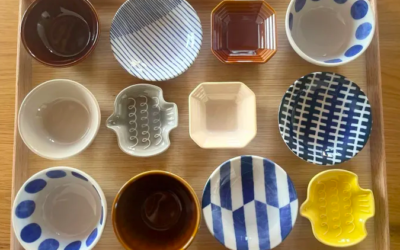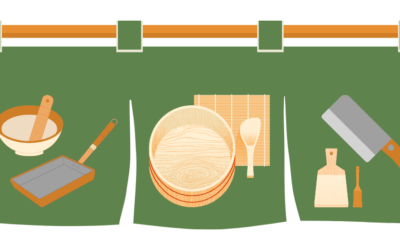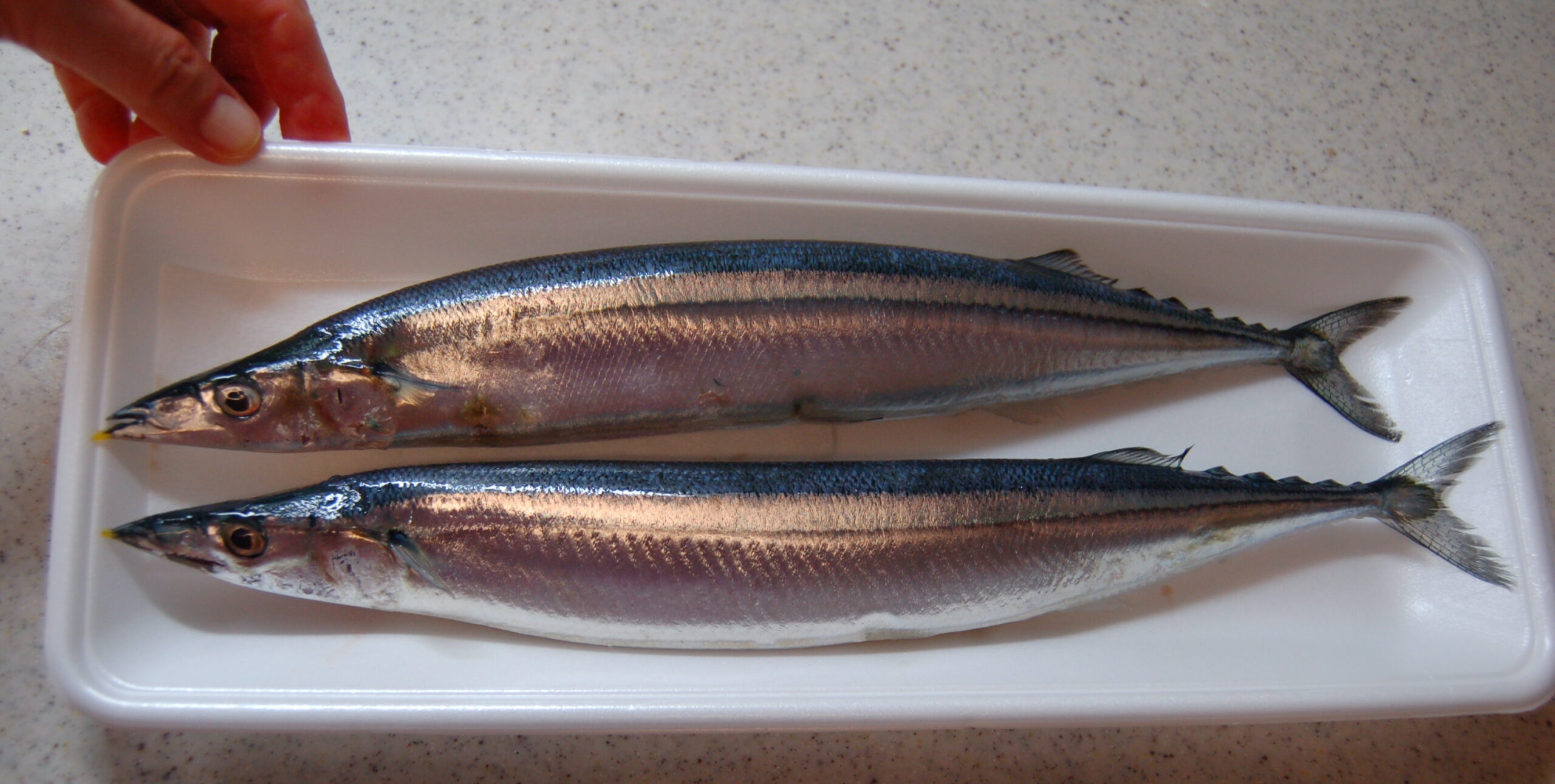
The Japanese speak of aki no mikaku (autumnal eating pleasures). Of the many foods placed in that category, a slender, sleek, and steely-colored fish called sanma (Pacific saury; Cololabis saira 秋刀魚) has always been considered shomin no aji, or “food for the masses.”
In historical novels and period-piece TV dramas, its the common folk, never the aristocracy, who enjoy sanma. Come September Japanese beer companies will picture smoky, sizzling, slightly charred sanma in their autumn ads. Most Japanese think of sanma as cheap and abundant (and delicious, of course!)
In reality, sanma has been far less plentiful in recent years, no doubt global warming is in part responsible though disputed fishing rights with nearby Asian neighbors are also an issue.
Wherever you may be, if you can source sanma you are in for a (plebeian) treat. Below two time-honored (though quite different) approaches to preparing the oily fish: salt-grilled whole and soy-stewed chunks. ENJOY!

Salt-Grilled Sanma
Typically, sanma is sprinkled with coarse salt, and then grilled, ungutted. Each person gets his or her own fish, whole. Served with a sudachi lime and a small mound of grated daikon radish, the fish can be drizzled with soy sauce.
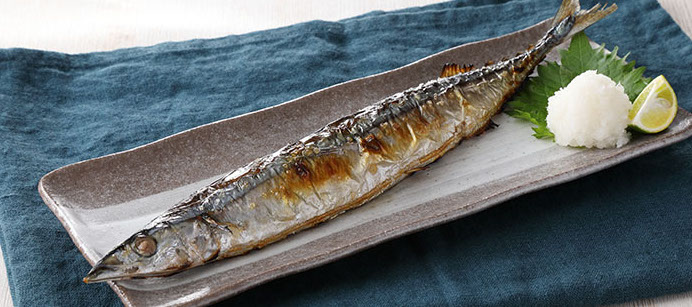
EATING Salt-Grilled Sanma
When the Japanese present whole fish on a plate, the head is typically to the left, tail to the right, and the belly facing forward. This is referred to as the “correct” position.
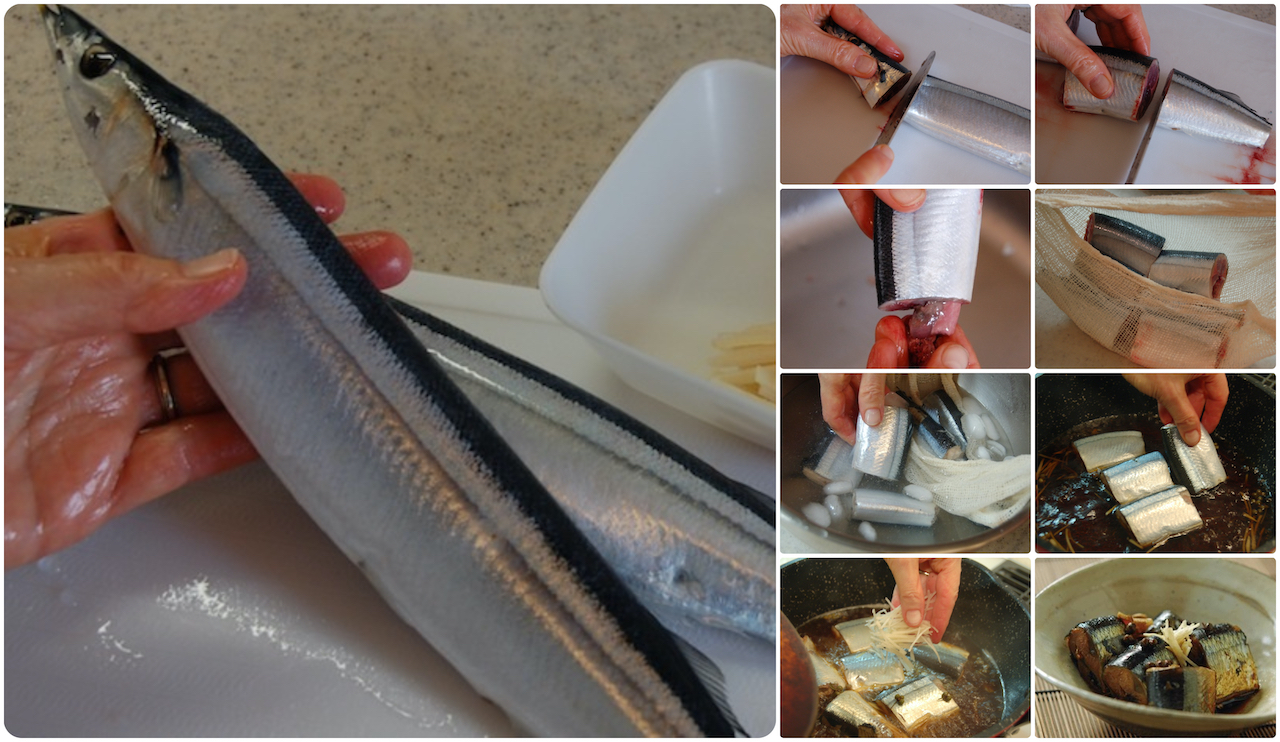
Soy-Stewed Sanma
When cut into segments first, gutting sanma is simple and (relatively) unmessy work. Seasoned with fresh ginger and sanshō pepper berries, possible “fishiness” is mitigated. Easy to eat (the simmered fish easily falls off the bone) this dish can be made ahead and stored in the refrigerator for up to 3 days. As with other soy-stewed dishes, flavors deepen with time and gentle re-heating.
Visit PROJECT Setting the Autumn Table for suggestions and recipes to help you cope with summertime lethargy.
And, if you haven’t yet read my September 2024 newsletter about SANMA, check it out.

